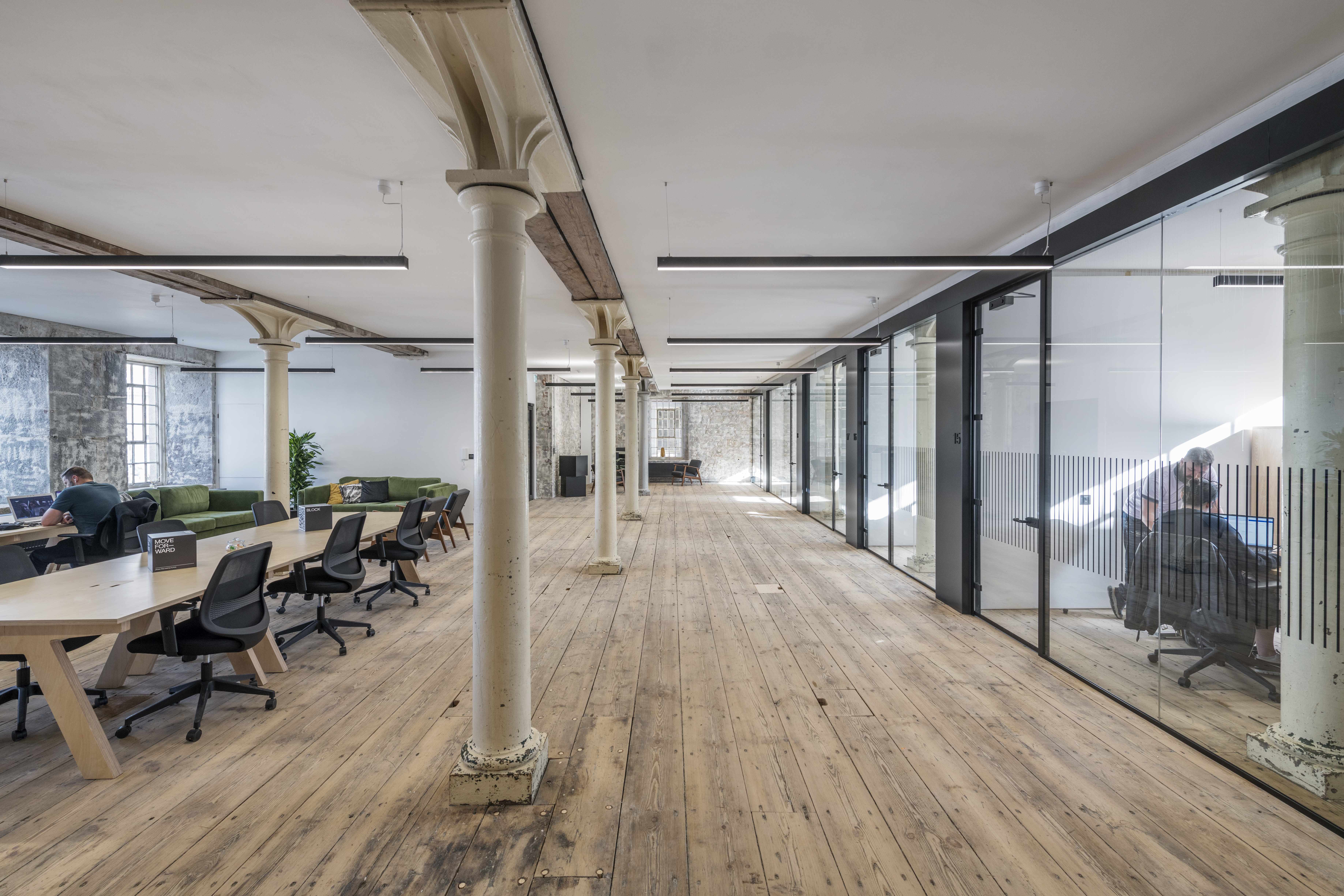Office Lighting Regulations and How to Comply.

When specifying lighting for office spaces there is one factor that is arguably the most important - compliance with regulations.
Every office lighting scheme and fittings within it are required by law to comply with building regulations and lighting standards. Crucial information like CIBSE guide lighting lux levels are to help property operators, facility managers and workplace designers understand how to provide a safe, healthy and comfortable environment and maintain required energy efficiency.
Navigating these documents can be overwhelming.
Here is a breakdown to simplify things:
-
Lighting Regulations - are enforced by law.
-
Lighting Guides - are recommendations that should be followed for a good practice.
-
Lighting Standards - are issued by the governing bodies like CIBSE, BSI.
Staying up to date is important - Lighting guides and standards.
There are no UK office lighting regulations as such. Instead, there are several workplace lighting standards and guides that are relevant to the UK market. Many of them were updated in the last two years (BS EN 12464-1, Part L and SLL Code for Lighting). BCO released the revision to the BCO Guide to Specification in February 2023.
Keeping up with all the lighting regulations is a challenge, so we have done all the heavy lifting for you. Our team have produced a completely new section on our website dedicated to lighting regulations. In this section, you will find all relevant guides and lighting standards covering lighting for offices and indoor workplaces. It covers aspects of workplace health and safety, light requirements for all types of indoor workspaces, recommended lighting levels and requirements for emergency lighting.
The bottom line - Lighting legislation UK.
Health and safety lighting in the workplace
The HSG 38 guide to health and safety lighting is not a legal obligation, but it is advisable to follow the guidelines.
Besides this, lighting legislation for health and safety in the UK only extends to emergency lighting. There are obligations around emergency lighting in areas such as corridor intersections, changes in level, exit doors and flights of stairs. These topics are covered in BS EN 1838 : 2013 - lighting applications - emergency lighting.
Energy efficiency requirements
With the growing demand for sustainability, there are higher expectations for energy efficiency in commercial buildings. This is addressed specifically in Building Regulations Part L.
Emergency lighting regulations
In case of power supply failure, each lighting installation has to comply with emergency lighting regulations. This is covered by BS 5266-1: 2016 - Code of Practice for the Emergency Lighting of Premises, alongside a summary of types of emergency lighting (standby lighting, escape route lighting, illuminated signs).
The focus is shifting - Lighting for well being.
Up until recently, the required illumination and luminaire performance have been the main focus when specifying lighting for office developments or refurbishments. With the new knowledge about the importance of natural light and its effects on human's health and wellbeing, the focus is shifting to light quality.
The quality of light and user comfort should not be sacrificed to achieve energy efficiency. Instead, lighting at work needs to be controlled through sensors and lighting controls to provide the best of both worlds. This is referred to as 'human-centric lighting'.
Most of the recently updated guides also recognise hybrid working and offer advice to people who are setting their own home office lighting.
For everything you need to know about getting the best lighting for your office space, visit our Guide to Office Lighting.
"Reading through lighting regulations doesn’t sound like much fun. But throughout this process, we have refreshed our internal knowledge on lighting standards, which is an important part of offering the best service and advice to our clients."
- Marcela Pomphrey, Marketing Director 299 Lighting.
For more in-depth coverage of all relevant lighting regulations, guides and standards for the UK, visit our workplace lighting regulations section.
We identified the most important parts of each document and highlighted the recommended lux levels for the office environment, the minimum lux for working areas, and the requirements for emergency lighting.
Read Next.
- Guide to Office Lighting
- Criteria for Choosing the Best Office Lighting
- The New LG 07 Guide is Out. What are the Changes?
- WELL Standard - The Importance of Lighting Consultants
- Office Lighting Solutions to Increase Productivity
- Back to Insights
